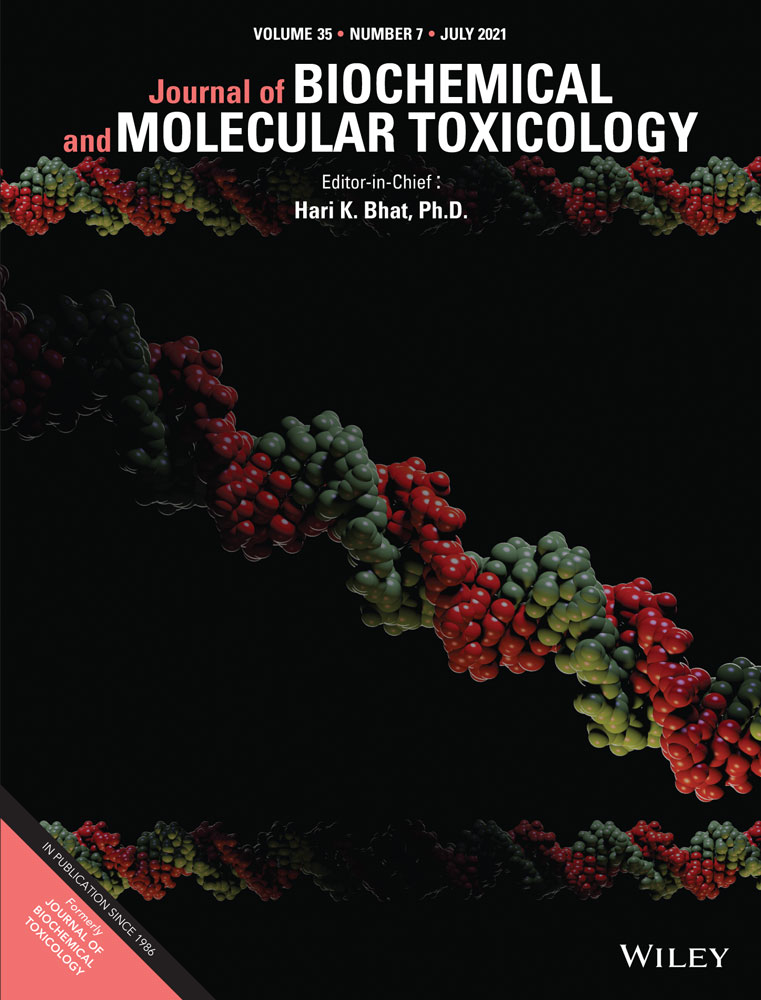Coenzyme Q10 inhibits RANKL-induced osteoclastogenesis by regulation of mitochondrial apoptosis and oxidative stress in RAW264.7 cells
Abstract
Coenzyme Q10 (CoQ10) has been reported to improve bone density and the number of trabeculae in postmenopausal osteoporosis, but the mechanism remains to be elucidated. We aimed to investigate the effects of CoQ10 on receptor activator of NF-κB ligand (RANKL)-induced osteoclastogenesis and the underlying molecular mechanisms. RAW264.7 cells were treated with different concentrations of RANKL to differentiate into osteoclasts, and then these cells were treated with different concentrations of CoQ10 with or without H2O2. Tartrate-resistant acid phosphatase staining was performed to detect osteoclasts. Cell viability was tested by 3-(4,5-dimethylthiazol-2-yl)-2,5-diphenyltetrazolium bromide assay, cell apoptosis was examined by flow cytometry, and the effects of CoQ10 on protein and messenger RNA expression of mitochondrial apoptosis-associated proteins and osteoclast marker proteins were measured by quantitative reverse transcription polymerase chain reaction and western blot, respectively. Furthermore, enzyme-linked immunosorbent assay was conducted to analyze the activities of malondialdehyde (MDA), superoxide dismutase (SOD), and catalase (CAT). RANKL significantly induced osteoclastogenesis in RAW264.7 cells, with the greatest efficiency at 50 ng/ml. CoQ10 had no significant effects on cell viability but it significantly increased the percentages of cell apoptosis. Mechanically, CoQ10 statistically decreased the levels of Bcl-2 and cytochrome C in mitochondria and upregulated the levels of Bax, cleaved caspase 3, and cytochrome C in the cytoplasm. Moreover, CoQ10 significantly decreased RANKL-induced osteoclastogenesis regardless of exposure to H2O2. In addition, CoQ10 statistically reduced MDA activity and elevated the activities of SOD and CAT, as well as the expression of oxidative stress-related proteins. CoQ10 may inhibit RANKL-induced osteoclastogenesis by regulation of mitochondrial apoptosis and oxidative stress in RAW264.7 cells.
Highlights
- 1
Osteoclastic are efficiently differentiated at 50 ng/ml of RANKL in RAW264.7 cells.
- 2
Coenzyme Q10 (CoQ10) promotes mitochondrial apoptosis in RANKL-treated RAW264.7 cells.
- 3
CoQ10 inhibits mitochondrial oxidative stress in RANKL-treated RAW264.7 cells.
- 4
CoQ10 inhibits RANKL-induced osteoclastogenesis.
CONFLICT OF INTERESTS
The authors declare that there are no conflict of interests.
Open Research
DATA AVAILABILITY STATEMENT
The datasets used and/or analyzed during the current study are available from the corresponding author on reasonable request.




